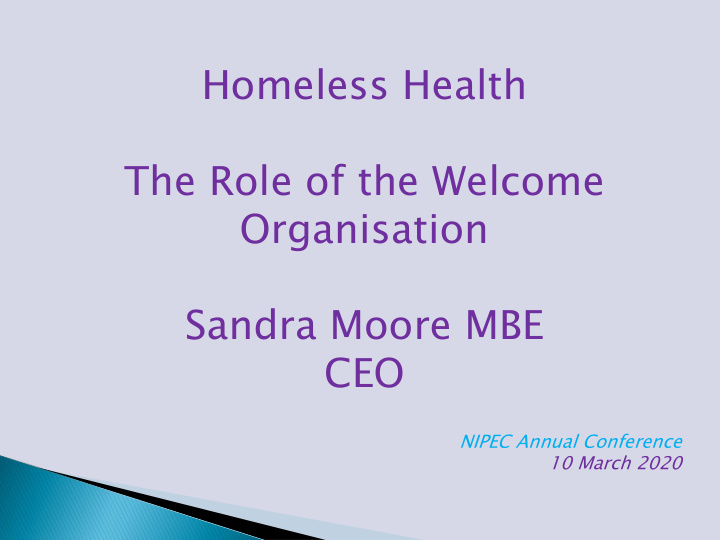



Homeless Health The Role of the Welcome Organisation Sandra Moore MBE CEO NIPEC Annual Conference 10 March 2020
1 in 1 n 18 p people wi will e experienc nce ho homelessness i in n the their l lifeti time
2018 /19 - 18,202 households presented as homeless Equivalent to 182 full Glider buses
Unemployment Debt Poverty Relationship breakdown History Difficult to address in isolation
• suffer some form of mental or physical health problem • live in dangerous conditions • have unhealthy lifestyles • 77% smoke • 35% don’t have 2 meals per day • 66% consume more than recommended amount of alcohol daily
High levels of GP registration Not receiving help needed Present in health crisis Heavy users of Acute NHS services A&E use 4 times greater
Belfast Based Belfast HSSCT 1,300 individuals every year 4 services Drop-in, Street Outreach, Floating Support, Women’s Crisis Accommodation,
Rough Sleepers Marginally accommodated Excluded persons At risk of repeat homeless Chronic homeless Chaotic lifestyles Behaviours associated with mental health substance use issues Dual diagnosis
Extremely low threshold model Exceptionally high tolerance Based on principles of harm reduction No cost to clients Ethos – meeting people where they are at
Investment in earlier interventions Greater investment in community mental health Improved care for people with co-occurring mental health and substance misuse Primary care services more targeted to the specific needs of homeless patients Housing and health are joined up as part of the same pathway Clear set of actions
Recommend
More recommend